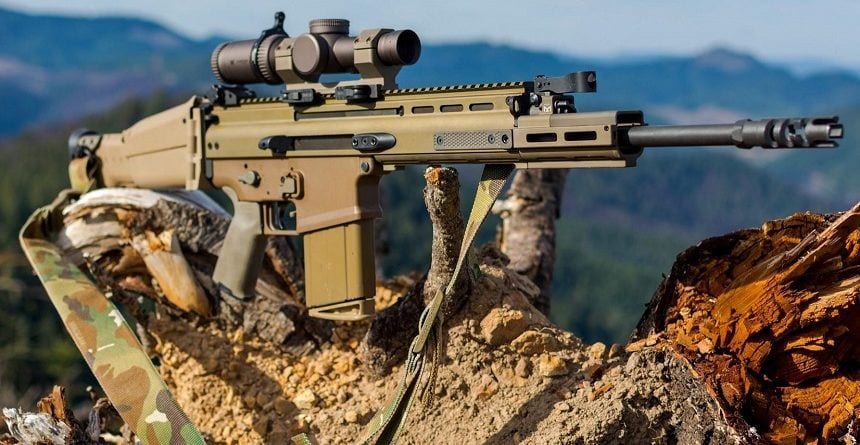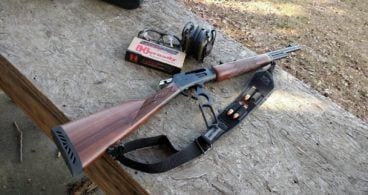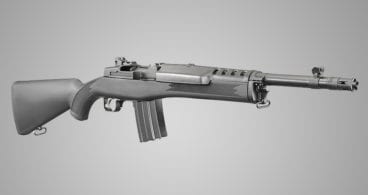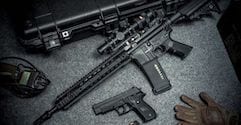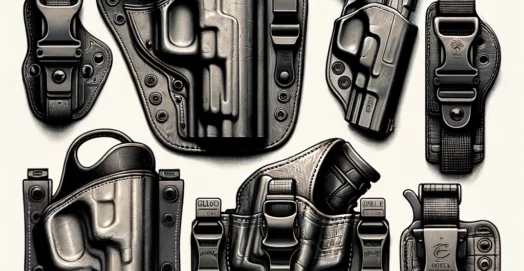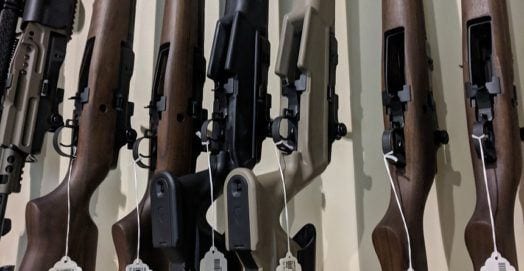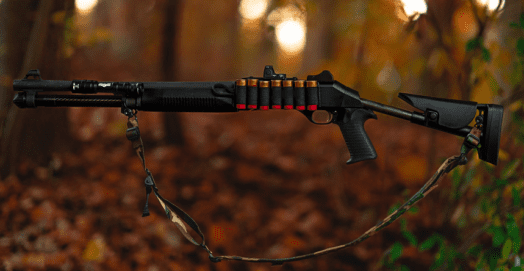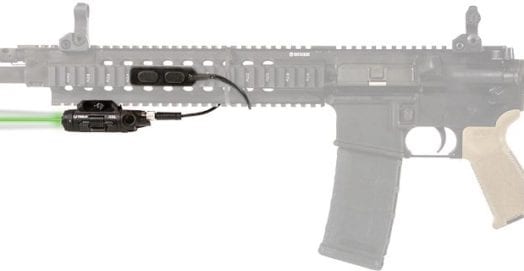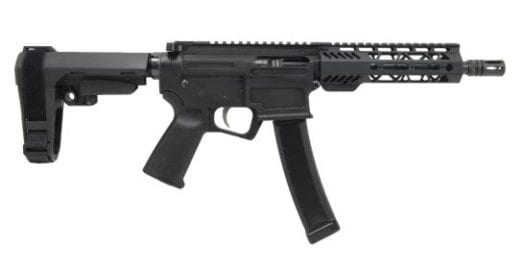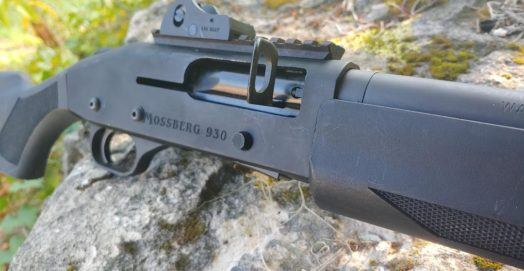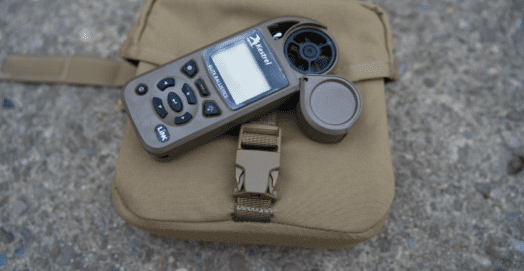5.56 NATO vs. .223 Remington: What’s the Difference & Which is Better?

There’s already a wealth of information out there, both online and in print, about the differences between the .223 Remington and the 5.56x45mm NATO. Sadly, when it comes to the .223 vs 5.56, a lot of this information is either misguided, ill-founded, or just plain wrong.
We’re going to try to set the record straight.
The .223 and 5.56 are two cartridges that are really just about as similar as you can get, and are identical from an external viewpoint, so considering the .223 vs 5.56, the confusion is understandable. Hopefully, though, we can clear up some of the issues surrounding these two cartridges and help you choose between the two.
This is especially important as these are the two most popular AR-15 calibers, so many shooters looking to buy an AR might be wondering which chambering is better than the other. In our review of the .223 vs 5.56, we’ll get into that too.
Read this .223 vs 5.56 discussion as more of a chambering vs chambering discussion, rather than a caliber vs caliber one, although we’re going to take a look at things like ammo availability and performance as well.
Contents
.223 and 5.56 History
In the years following the Korean War, work began in the US on a rifle and cartridge that could compete with the German STG-44 and the Russian AK-47, both relatively light (for the time) rifles firing an intermediate caliber that was controllable under fully-automatic fire.
The goal was to create a round that was high-velocity, relatively light so that troops could carry hundreds of rounds without issue, and with enough power to still be effective against battlefield targets at 500 yards. The US military also wanted a new lightweight combat rifle to fire the new round.
In early 1957, the following standards for the round and accompanying rifle were set:
- A .22 caliber bullet that remained supersonic past 500 yards.
- Rifle weight of 6 lbs or less.
- Magazine capacity of 20+ rounds.
- Select fire for both semi-automatic and fully automatic use, while remaining controllable at full-auto.
- Penetration of a US WWII-issued steel helmet on one side at 500 yards.
- Penetration of .135″ steel plate at 500 yards.
- Accuracy and ballistics equal or superior to M2 ball ammunition (fired by the .30-06 M1 Garand).
- Wounding ability equal or superior to the M1 Carbine firing .30 Carbine ammunition.
As part of the development of this new rifle and new round, Eugene Stoner, designer of the AR-10, was asked to attempt to scale down his AR-10 design to the specifications required, and to work on developing a round for it to fire.
After some testing that involved both Robert Hutton (then technical editor of Guns and Ammo magazine) and Frank Snow (Sierra Bullets), a round that would later be called the .222 Remington was developed. While the round publicly passed the helmet test at 500 yards and was initially deemed a success, further testing showed that chamber pressures were too high, mostly due to the amount of powder that had to be used to get the velocities required.
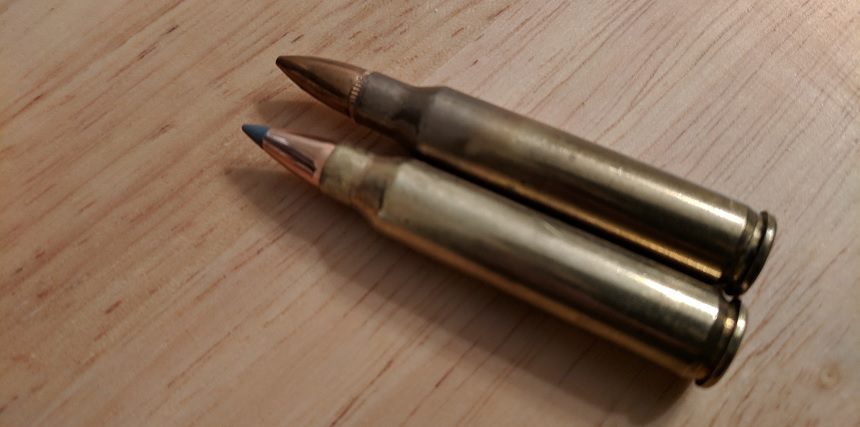
Stoner then contacted both Remington and Winchester about developing larger brass and released a case that they called .222 Special, but would later be renamed (due to the excess of .222 rounds being tested) to the .223 Remington.
Further testing with Stoner’s prototypes led to the AR-15 rifle chambered in this new caliber, and after Air Force General Curtis LeMay successfully tested the new rifle and cartridge at an Independence Day picnic in 1960, the AR-15 had its first government order as a replacement for some M1 Carbines.
Further testing was done where and in 1961, after seeing the success of the AR-15 in trials where it out-performed the M14, LeMay ordered 80,000 new AR-15 rifles and ammunition to support them. Shortly thereafter, Remington sent it’s specifications for the .223 Remington to the Sporting Arms and Ammunition Manufacturers’ Institute (SSAMI), the US standardization group for most firearms and ammunition, and received a certified specification for the round in the spring of 1962.
In July of 1962, the M16, the select-fire version of Stoner’s AR-15, was brought into service officially. The following year, the “Cartridge, 5.56mm Ball, M193” was officially standardized as well.
Almost 20 years later, following U.S. success with the round, NATO forces adopted a slightly modified version of the original .223 Remington as the 5.56x45mm NATO. This round was developed by FN Herstal to fulfill a NATO request for standard intermediate rifle round.
The chief difference was a slightly longer throat in the 5.56×45 chamber that could handle the longer tracer projectiles needed by the military and resulted in lower overall pressures and increased reliability (in theory).
Since then, 5.56×45 NATO has been the chief rifle round used by US and NATO forces, where it is still in service to this day, and will remain so for at least the immediate future. Along with the .223 Remington, it represents the single most popular centerfire rifle cartridge on the planet and is popular with both civilian shooters and LEO/military users.
Ammo Availability and Price
With that popularity comes a slew of debates over which version to buy, the .223 vs 5.56. One of the chief considerations with these cartridges, particularly in terms of a defensive/end of the world gun, or for a competition gun you’re likely to put a lot of rounds through, is the price and availability of ammunition.
Overall, there’s maybe more .223 Remington available on the shelf at the local sporting goods store, but when you take military stockpiles into account there’s probably more 5.56x45mm ammo overall. I’d say availability of the .223 vs 5.56 is pretty much a wash, with maybe a slight advantage going to the .223 because you can find it easier in the store, even stores that don’t sell AR-15’s.
Price-wise, the two are closer than ever, but because of thinner-walled brass used in the civilian version, as well as less powder, the .223 Remington is definitely still cheaper overall.
Edge: .223 Remington
Accuracy and Ballistics
So .223 Remington is cheaper, but which round is superior ballistically?
Just comparing the cartridge specs, this is an easy call: 5.56 has a higher pressure load, which means more velocity, which means more energy and less drop and drift.
Comparing chambers and ammo is a bit dicier, however. Because the .223 Remington is, on paper, a more accurate chamber due to the tighter tolerances and shorter leade, it has less “jump” when the bullet moves from the case to the barrel rifling, which in theory should make the round leave the barrel more consistently.
Is that difference going to matter though? Honestly, probably not. You’re not going to miss that prairie dog or that A-zone on the target because you brought a 5.56 NATO rifle instead of a .223 Remington one.
Overall, velocity in your average 5.56x45mm NATO load is going to be higher than the .223 Remington, but this is again not going to be much of a difference. I’d say this one is too close to call.
Edge: It’s a tie. Both have their strengths.
NATO Chambers
So we’ve covered the ammo differences, what about the chambers themselves? How are they different in the .223 vs 5.56?
Short Answer: .223 Remington chambers are smaller. The chamber is just smaller overall, but specifically, the leade or throat of the chamber is the problem. This is the distance between the mouth of the cartridge itself, and where the bullet contacts the rifling.
Why does that matter?
Well, the leade in the 5.56×45 chamber is longer, to accommodate longer bullets, higher pressures, and to generally facilitate more reliable function under the battlefield conditions the round was designed to be fired in.
Because the leade of the .223 chamber is shorter, you have less distance from the bullet leaving the mouth of the case and contacting the rifling of the barrel, which is what causes pressure to build. With a .223 Remington round fired from a .223 Remington case, that’s just fine.
Now if you were to take a 5.56x45mm NATO round that’s already loaded to a higher pressure, and fire that in a .223 Remington case, the bullet is going to contact the rifling sooner, which causes that pressure to start building sooner, and thus you have even higher pressures, to the point where you have a potentially dangerous situation on your hands.
At a minimum, you’re probably going to start bursting spent primers out of the back of the case, and they’re going to fall into your magazine or lower, and can cause everything from a jam to a run-away burst of full-auto fire when you try to put the weapon on safe. Not good.
Of course, you may also fire thousands of rounds of 5.56×45 out of your .223 gun and never have an issue. This could be because the chamber spec is a little sloppy, or what have you, or you could just get really, really lucky, but I personally wouldn’t recommend it at all. In general, when you’re harnessing the power of an explosion to fire a piece of metal at three times the speed of sound, I’d recommend erring on the side of safety.
That said, firing small amounts of 5.56×45 through a .223 gun probably isn’t going to do much to the gun unless you do it an awful lot. It’s not going to turn into a grenade. Lucky Gunner did some extensive testing and found there wasn’t even that much of a pressure difference, but they still recommended not shooting 5.56 through a .223 regularly.
Conversely, firing a .223 Remington that is overall a lower pressure round, through a true 5.56x45mm chamber, is perfectly fine because you have a bullet designed for a short leade in a longer leade chamber. At worst, you’ll see a small drop in accuracy and velocity, but in my experience, it isn’t enough of a difference to matter to 99.99% of shooters. And you may not even get an accuracy drop at all.
Because you can fire the more plentiful .223 ammunition as 5.56x45mm NATO through a 5.56×45 chamber, you have more options available, so the edge goes to the 5.56×45 NATO chamber.
Edge: 5.56×45
.223 vs 5.56: Parting Shots and Our Winner
Overall, I have to give the win to the 5.56×45 here, not because of any inherent superiority in performance, but because you can safely fire both .223 Remington and 5.56×45 out of a 5.56 chamber.
Overall Winner: 5.56x45mm NATO
There are a few things to keep in mind, however.
First, while it’s not recommended, you certainly can fire 5.56×45 out of a .223 chamber and everything is most likely going to be fine. I personally don’t, and there’s a wealth of information out there on why you shouldn’t. Again: I always recommend following manufacturer recommendations when dealing with explosions and supersonic projectiles right next to your face.
Second, while you can fire a .223 Remington from a 5.56 chamber, you might lose a little accuracy and velocity, but it probably won’t be enough to matter, and I’ve personally never seen anyone demonstrate anything other than a theoretical accuracy loss.
The one issue here is that you may not have enough pressure from the .223 Remington to cycle a 5.56×45 auto-loader, but this is again something that’s theoretical and I’ve never actually seen it happen in a gun without an adjustable gas block that was tuned to run on the heavy side, in which case just adjust the gas block.
Finally, there are a host of wildcat chambers like .223 Wylde, .223 Match, 5.56mm Noveske Match, .223 Target and others that purport to offer a 5.56 capable chamber with enhanced accuracy.
For the most part, these claims are accurate, and this is where I’d look before I bought a .223 Remington-chambered rifle. The .223 Match and 5.56mm Noveske Match are both superior, in my opinion, to the standard .223 Remington, and are safe with 5.56 ammo to boot.
